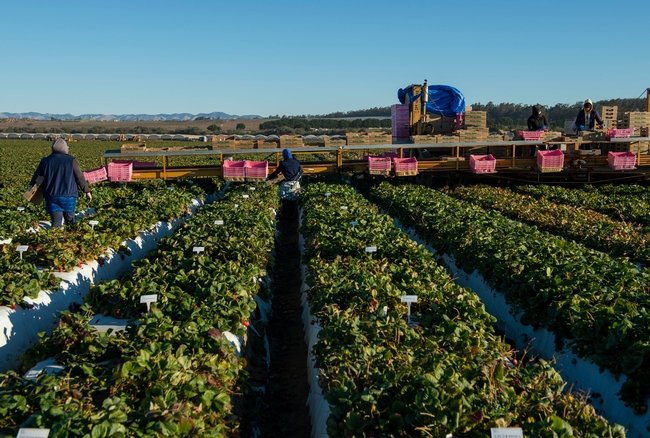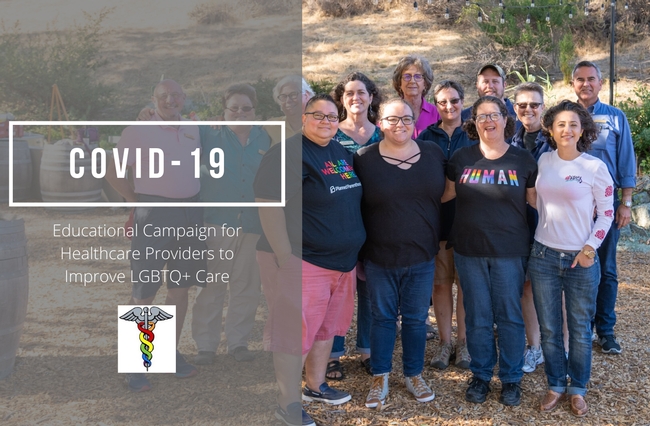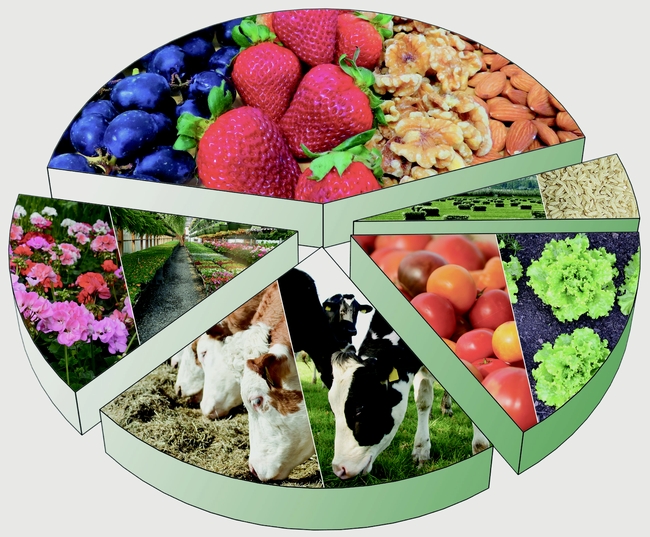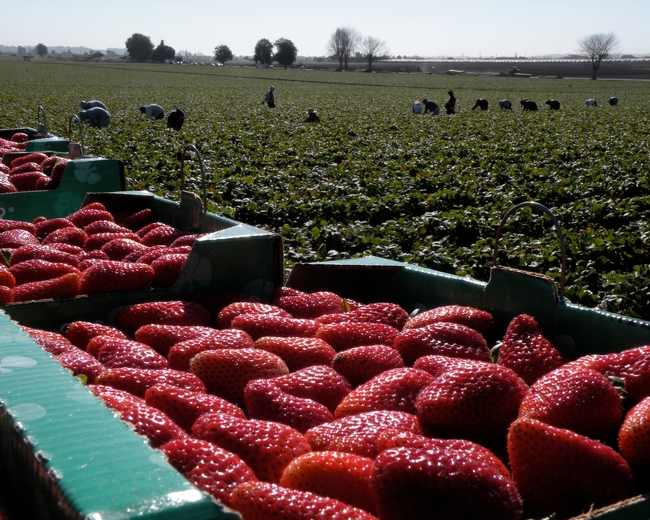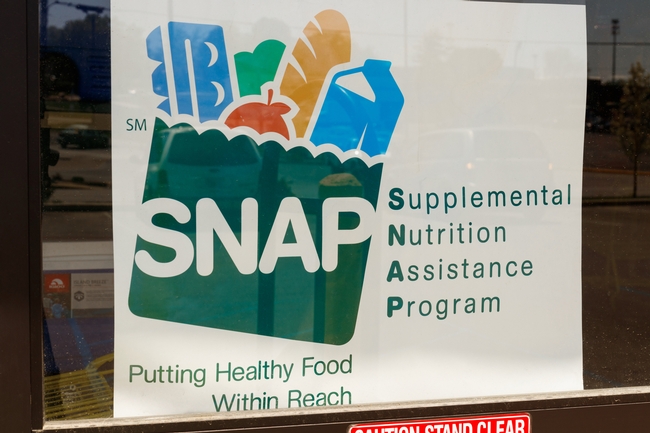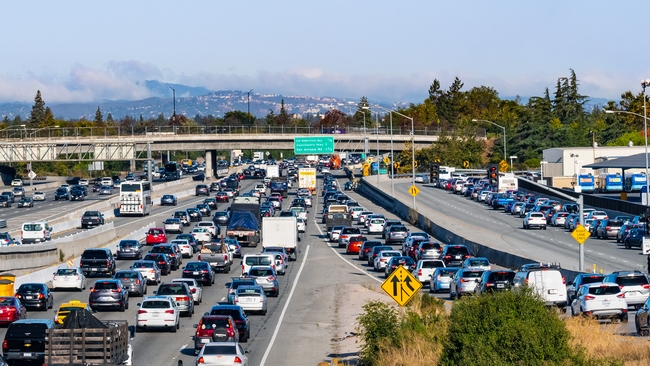Posts Tagged: coronavirus
Torres Martinez Tribal Council helped distribute Farmers to Families produce boxes
During the month of June, families at the Torres Martinez Desert Cahuilla Indian Tribe and nearby trailer parks in eastern Coachella Valley received free produce boxes weekly from the USDA Farmers to Families Food Box Program.
This program was created by USDA to give families in need access to fresh food during the coronavirus pandemic. From May 15 to June 30, USDA purchased agricultural products under Families First Coronavirus Response Act from suppliers who were impacted by closure of restaurants and other food service businesses for distribution to those in need.
The UC Agriculture and Natural Resources CalFresh Healthy Living Program at UC Cooperative Extension in Riverside County helped connect the Torres Martinez Tribal Council with Sunrise Produce Company, a supplier in Southern California that contracted with USDA.
About 400 22-pound produce boxes were delivered to the tribal headquarters every Friday in June. Vice chairman Joseph Mirelez of the Torres Martinez Tribal Council and his team organized the truckload delivery and distribution. CalFresh Healthy Living, UC nutrition educator Jackie Barahona provided indirect education by distributing recipe cards from Leah's Pantry and handouts with the "eating the rainbow" recommendation from the Plate Full of Color storybook produced by CDC Native Diabetes Wellness Program.
According to the American Community Survey (2014-2018), 28% of families in Thermal live below poverty level (shaperivco.org). In addition, 16.7% (14,647) of children in Coachella Valley live in households where their parents/guardians were often or sometimes concerned about their ability to buy food. (harcdata.org, 2019)
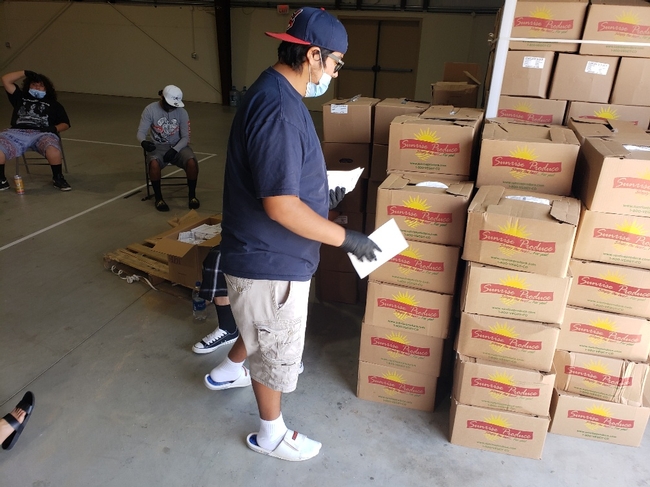
20200605 114905 resized
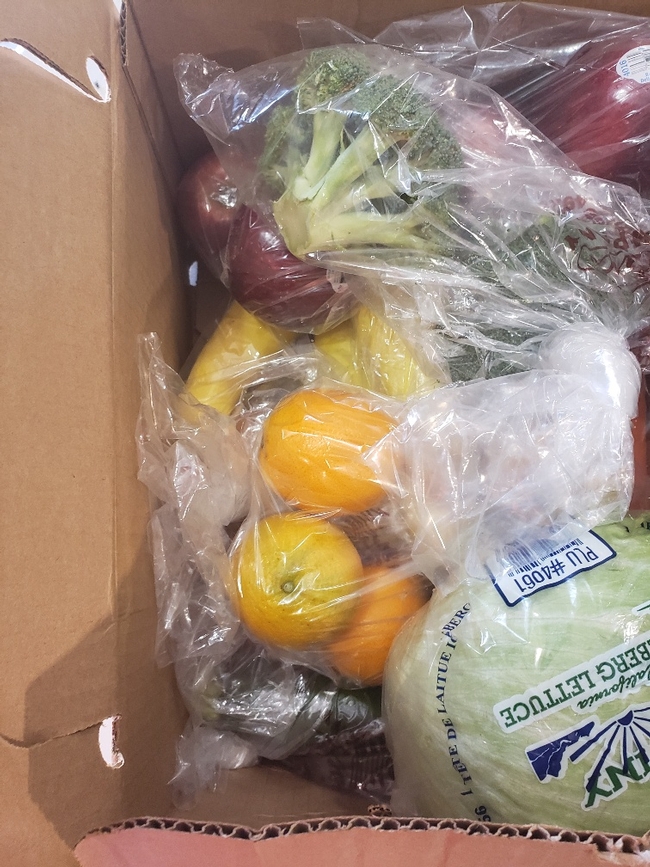
20200605 132838 resized
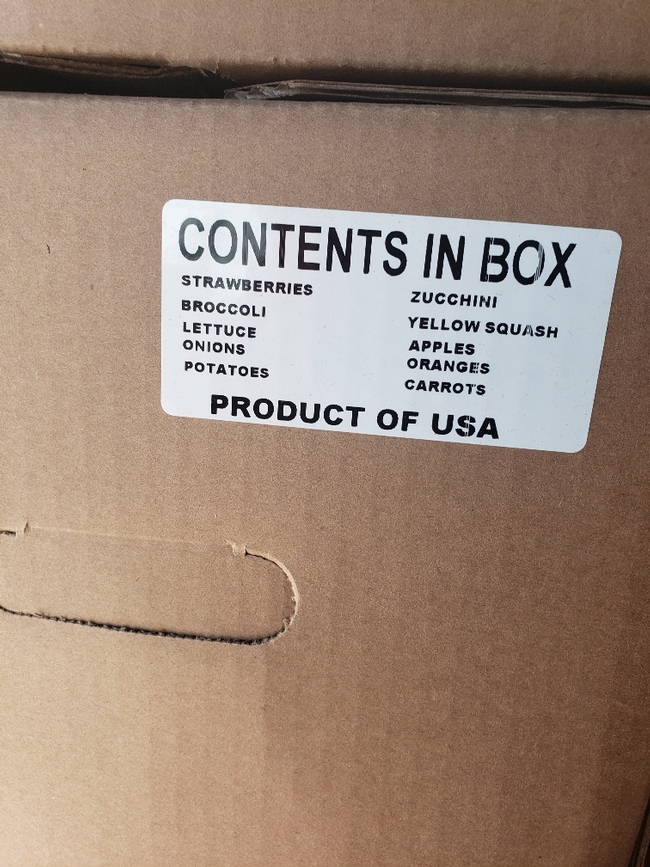
20200605 141621 resized
UC conducts survey of COVID-19 prevention on farms
All California growers, ranchers, farm labor contractors and ag supervisors are invited to complete a short survey about their experiences addressing COVID-19? in the workplace. The survey is being conducted by the UC Davis Western Center for Agricultural Health and Safety.
The survey ?is anonymous, should take less than 10 minutes ?to complete?, and is available in English and Spanish at https://bit.ly/agCOVIDsurvey.
“At the UC Davis Western Center for Agricultural Health and Safety, we are working to respond to the COVID-19 crisis with practical resources for growers, ag employers, and farmworkers,” said Heather E Riden, agricultural health and safety program director. “The goal of this survey is to understand what practices farms are implementing to prevent COVID-19, where they have seen success, and where there may be challenges. We will take this information to assess whether there are new resources, trainings, or information that we can provide.”
Respondents are given the opportunity to share their contact information at the end of the survey.
“We plan to share any findings as well as new materials with anyone who expresses interest,” Riden said. “We will also summarize the results and post them on the WCAHS website.”
For more information about the survey, contact aghealth@ucdavis.edu. ?
Visit https://aghealth.ucdavis.edu/covid19 for COVID-19 training resources and employer guidance. The center's COVID-19 website offers farmers many resources, including an employer checklist and tailgate training discussion guide.
LGBTQ+ community at higher risk for COVID-19 complications
The coronavirus crisis is revealing inequities in public health that arise out of social factors. Raising awareness among LGBTQ+ individuals about COVID-19 is one of 85 research projects selected for funding by the University of California to lessen the pandemic's impact.
"LGBTQ+ individuals are at increased risk for severe illness from a COVID-19 infection,” said Katherine Soule, UC Cooperative Extension youth, families and communities advisor, who is leading the project. “We are partnering with LGBTQ+ serving organizations, health care providers, government agencies and decisionmakers to develop an educational campaign. Our goal is to increase the quality of healthcare services for LGBTQ+ individuals.”
The team is working with community partners across the state to deliver the information through social media, online training and other means of information sharing.
One reason that lesbian, gay, bisexual, transgender and queer people are vulnerable to more COVID-19 complications is that they are likely to postpone medical care due to fears of stigmatization. Also, LGBTQ+ individuals report poor quality healthcare and abuse in healthcare facilities, which may deter them from seeing a doctor. In addition, LGBTQ+ individuals are also hesitant to reveal or discuss their gender identity and/or sexual orientation, which can lead to inadequate treatment, care and access to essential services.
At the same time, LGBTQ+ individuals are at higher risk of having underlying chronic medical conditions, such as asthma, cancer or HIV. LGBTQ+ people over age 65 are also more likely to suffer from poverty, physical conditions and mental health conditions that put them at higher risk during the COVID-19 crisis.
“Consequentially, healthcare professionals and medical providers need to be prepared to effectively communicate with, engage with and treat LGBTQ+ individuals during this crisis,” Soule said.
Working with LGBTQ+ organizations and health care institutions, Soule and two student interns are leading an effort to develop a campaign to increase awareness among LGBTQ+ individuals of their heightened risk during the COVID-19 crisis. For healthcare providers, they are raising awareness of LGBTQ+ terminology and issues to improve their competency in treating LGBTQ+ patients.
Although statistics on the death toll and infection rates are tracked for race and ethnicity, they are not tracked for LGBTQ+. “The systemic decision to not track sexual orientation and gender identity is one of the reasons why this high-risk population is both more vulnerable and mostly invisible,” Soule said.
“Increasing awareness of these issues by healthcare providers, medical professionals, and community service organizations is vital during the COVID-19 crisis to support positive health outcomes of LGBTQ+ individuals," she said.
Her two student interns are 4-H Youth Development Program alumni: Danielle Pacheco, a Smittcamp honors student at California State University, Fresno, and Trent Baldwin, a Monterey County native majoring in community extension education at The Ohio State University.
“I am pursuing a career in medicine and feel strongly about addressing the needs that marginalized communities face in the midst of the COVID-19 crisis,” Pacheco said. “I am also passionate about LGBTQ+ issues as I am a member of that community. This project is a great way to support the community I love as well as being able to work on something I am passionate about.”
Baldwin said, “Through my time in the 4-H program, I developed a passion for LGBTQ+ youth development and extension work. I worked for a time with Ohio 4-H on their LGBTQ+ Youth Dialogue event. I'm excited to be involved and to get extension work experience in this topic!”
Related stories:
UC awards $2 million in critical research seed funding for COVID-19 high-risk populations
Newly funded COVID-19 research aims to protect the most vulnerable
How has coronavirus pandemic impacted California food, agriculture and environment?
New report explores long-term effects of COVID-19 on state's cattle, dairy, produce, strawberry, tomato, nut and wine industries.
COVID-19 continues to affect parts of California agriculture in different ways. A new report from agricultural economists at the University of California examines the current and long-term impacts on California's leading agricultural industries.
Profiles in the report illustrate the different ways the pandemic has impacted dairy, beef and produce – industries that have scrambled to repurpose products from foodservice to retail – and tree nuts, an industry that saw a temporary spike in sales as consumers hoarded storable goods. The report includes expert assessments of what the future holds for California's cattle, dairy, produce, strawberry, tomato, tree nut and wine industries.
The studies are contained in a special coronavirus issue of ARE Update, a bimonthly magazine published by the University of California Giannini Foundation of Agricultural Economics. Contributors include several experts from the UC Davis Department of Agricultural and Resource Economics.
In addition to industry profiles, the report includes three articles addressing the effect of the pandemic on farm labor, food security, and traffic and pollution in California. The authors conclude that farm labor supplies are likely to be reduced due to the pandemic, hastening the trend toward mechanization. Authors of the study on federal nutrition assistance programs expect participants in these programs to face unprecedented economic hardship due to the COVID-19 pandemic. They suggest specific policy responses to reduce the impact. The study on vehicle traffic (and associated pollution) in California shows that travel dropped dramatically—by 40% to 60%—in California following the stay-at-home order, but then began increasing in mid-April, long before any restrictions on the stay-at-home order were lifted.
“Although the coronavirus pandemic continues to afflict most parts of the world, states and countries are attempting to reopen their economies and assess the damage that has been wrought,” said Richard Sexton, UC Davis distinguished professor and co-editor of ARE Update. “We look at the impacts on California agricultural industries and the implications for the environment and consumers, especially the most vulnerable among us.”
COVID-19 and farmworkers
No state relies upon agricultural labor more than California, where employment peaks seasonally in June. When stay-at-home orders were issued in March 2020 to slow the spread of COVID-19, farmworkers were deemed essential and expected to continue working.
As California's farm employment climbs toward its June peak, sick farmworkers, closed schools and uncertainties surrounding the H-2A guest worker program could reduce the supply of farmworkers, accelerating trends already underway such as mechanization.
Full article can be found at https://s.giannini.ucop.edu/uploads/giannini_public/c8/0a/c80aa637-6775-4bfa-9a64-bd680cc2dbce/v23n5_2.pdf.
Nutrition assistance programs
Processing plant closures, consumer stockpiling of key staple foods and other supply chain disruptions have raised serious questions about food security in the U.S. Enrollments in CalFresh, for example, are up as much as 80% in California from last year at this time.
The authors address the role policymakers, food banks and food assistance programs like the National School Lunch Program and Women, Infants and Children (WIC) can play in meeting food-security challenges now and in the future.
Full article can be found at https://s.giannini.ucop.edu/uploads/giannini_public/75/3d/753dcb99-8d44-4bd9-a668-b277a45456eb/v23n5_3.pdf.
Traffic, travel and pollution
Near real-time data can give key insights into how the pandemic and economic shutdown have impacted behavior in California. Using Caltrans traffic sensor data and Apple data, economists show that travel in California dropped precipitously when the stay-at-home orders were issued—down 40% to 80%, depending on the data source—but the rate of decline varied considerably by regions within the state.
While the stay-at-home order did reduce travel, the report found that the shutdown had no effect on fine particulate concentrations, a key contributor to air pollution.
Full article can be found at https://s.giannini.ucop.edu/uploads/giannini_public/30/4c/304cd12d-bcae-4ebb-8f5c-288695030eca/v23n5_4.pdf.
To read ARE Update's Special Issue: Implications of the Coronavirus Pandemic on California Food, Agriculture, and the Environment, visit https://bit.ly/ARECOVID19impact or https://s.giannini.ucop.edu/uploads/giannini_public/d4/e0/d4e0d72d-648c-4a0e-9048-cef6d9f2ba77/v23n5.pdf.
Commodity profiles can be found at
Strawberry: https://s.giannini.ucop.edu/uploads/giannini_public/6a/03/6a0331aa-30fe-47d6-97e7-1d6d437ec6fc/v23n5_10.pdf
ANR in the news May 1-15, 2020
How coronavirus is affecting the food supply
(Spectrum News) Jennifer Rufer, May 15
…Daniel Sumner, Executive Director of the University of California Agricultural Issues Center at UC Davis, tells Inside the Issues the meat shortage is a direct result of COVID-19. Because workers are typically in such close quarters, some are getting sick. The Centers for Disease Control and Prevention found 3 percent of workers in 100 meat processing plants have tested positive for the coronavirus, which, Sumner said, could mean the production won't be as robust as it used to be.
He said one of the bigger disruptions to the industry has been the impacts on cowboys and farmers who only provide one product.
“If you're a pig farmer, that's what you've got. The pigs are ready to go. So, everyday that you keep that hog, a 300 lb. hog, ready to go, you're losing money,” he said. “The same with cattle that are ready to go and there's no place to put them. That has shown in the price of cattle, and the price of hogs collapsing.”
The Surprising Backstory of Victory Gardens
(JSTOR Daily) Madeleine Compagnon, May 15
…Cultivating the earth as a response to moments of crisis dates back over a century, but not just as a relaxing activity. During World War I, writes Rose Hayden-Smith, a major Victory Garden movement promoted the idea of gardening as a civic duty. The goal was to increase food production on the home front, under the reasoning that the conservation of resources on the home front was key to victory on the battlefield. Garden propaganda was “striking in its use of military imagery,” according to Hayden-Smith's article. Poster campaigns often depicted “regiments” of women and children as “soldiers of the soil,” marching alongside U.S. troops.
https://daily.jstor.org/the-surprising-backstory-of-victory-gardens/
Revised Budget Features Significant Cuts to Close $54 Billion Deficit
(AgNet West) Brian German, May 15
…In his summary describing the state's economic position moving forward, Governor Newsom highlights federal assistance as playing a sizable role in structuring California's budget. Several reductions have been proposed if the state does not receive sufficient funding from the federal government, such as a 10 percent reduction in support for the University of California system. The UC Office of the President, UC PATH, and the UC Division of Agriculture and Natural Resources (UC ANR) would experience a decrease of more than $34 million in funding. New initiatives that were highlighted in the January budget, including the nearly $170 million in general funds for supporting a five percent UC base increase, have been now been withdrawn. The revised budget also eliminates another $3.6 million that would have supported a five percent base increase for UC ANR.
http://agnetwest.com/revised-budget-features-significant-cuts-54-billion-deficit/
$50 ribeye to go? Expect higher meat prices at Bay Area grocery stores and restaurants – (SFChronicle) Esther Mobley, May 14
…But while the supply of beef and pork in the U.S. has been down 10-15% in recent weeks, there is no long-term threat to the nation's meat supply, and already “it's creeping back up,” said Daniel A. Sumner, director of the University of California Agricultural Issues Center.
However, meat prices are also creeping up, and customers nationwide should expect their favorite cuts to be 10-20% more expensive than normal, Sumner added. In the Bay Area, the consumer price index for meat, poultry, fish and eggs rose 10.4% from February to April, according to the U.S. Bureau of Labor Statistics, compared to 5.5% for all types of groceries.
https://www.sfchronicle.com/food/article/Coronavirus-meat-shortage-We-won-t-run-out-of-15270789.php
UCCE sounds alarm on looming insect threat
(Farm Press) Jeannette Warnert, May 14
… “Spotted lanternfly is a major threat to apples, grapes, stone fruits, roses, landscape trees and the timber industry,” said Surendra Dara, UC Cooperative Extension entomology and biologicals advisor in San Luis Obispo, Ventura and Santa Barbara counties. “The agricultural industry and the public need to be looking out for this insect to prevent its migration and establishment in California.”
https://www.farmprogress.com/insects/ucce-sounds-alarm-looming-insect-threat
How to protect your home from disasters amplified by climate change
(Science) Mary Caperton Morton, May 13
…When it comes to climate-driven natural disasters, fires are as frightening as floods. In 2017 and 2018, California wildfires killed 147 people, burned 3.5 million acres and destroyed over 34,000 structures in two of the worst fire seasons on record. And wildfires are expected to become more severe across the West, says Max Moritz, a wildfire specialist at the University of California, Santa Barbara. “Warming temperatures are melting snow sooner and drying out vegetation so that we're already seeing longer fire seasons and more available fuel.”
…In densely built areas, the houses themselves can fuel fires. “You've probably seen aftermath photos where a fire has swept through a town and all the homes have burned, but there are still trees standing and green vegetation,” Moritz says. “That's what happens when the homes themselves are the fuel. It's not a land management problem where you should have cleared more. You can't thin the fuels because the homes were the fuel.”
https://www.sciencenews.org/article/how-to-protect-your-home-from-disasters-climate-change
Vine mealybug a menace in Monterey County
(Farm Press) Lee Allen, May 13
Larry Bettiga is urging growers to keep an eye out for vine mealybugs.
As the University of California Cooperative Extension Viticulture Farm Advisor from Monterey County observes, mealybugs are spreading leaf roll virus from site to site along the Central Coast.
Larry Bettiga is urging growers to keep an eye out for vine mealybugs.
As the University of California Cooperative Extension Viticulture Farm Advisor from Monterey County observes, mealybugs are spreading leaf roll virus from site to site along the Central Coast.
https://www.farmprogress.com/grapes/vine-mealybug-menace-monterey-county
New UC studies outline costs of producing irrigated pasture in the Sierra Nevada foothills
(YubaNet) May 12, 2020
Two new studies on the costs and returns of establishing and producing irrigated pasture in the Sierra Nevada Foothills have been released by UC Agriculture and Natural Resources' Agricultural Issues Center. Ranchers in Nevada, Placer and surrounding counties may find the cost estimates useful for planning.
USDA announces food distribution program, but will it help farmers?
(NPR Marketplace) Jasmine Garsd, May 11
…Now the U.S. Department of Agriculture has announced that starting this week, the Farmers to Families Food Box Program will begin distributing $1.2 billion in surplus food to communities across the country. Professor Daniel Sumner of the University of California, Davis, says the program aims to assist those who might not be covered by other programs, like food stamps. “They are homeless or they're not eligible in other ways. One of the attempts here is to get food to the poorest, most vulnerable people.”
Covid19 Pandemic Panic Gardening
(Food Chain Radio) Michael Olson, May 9
Guest: Missy Gable, Director University of California Master Gardener Program
https://metrofarm.com/michael-olson/covid19-gardening
4-H members embrace new communication technology
(Desert Review) Kayla Kirby, May 8
Imperial County 4-Hers have taken to the internet to connect with other members, leaders, and the community to share their experiences and current practices at home.
According to Program Director Anita Martinez, people think 4-H has gone dark after showing their animals at the fair. Martinez said that couldn't be further from the truth.
“During this time of year, everyone thinks 4-H is over because the fair is over. But this is when all of the other activities, projects, and events are going on,” said Martinez.
Vineyard Mechanization: Quality at a Distance
(Wine Business) W. Blake Gray, May 8
…"Vineyard size has increased in California due to consolidation," said S. Kaan Kurtural, associate specialist for cooperative extension viticulture at UC Davis Department of Viticulture & Enology. "Mean acreage is approaching close to 260 acres. It's hard to get to all these vineyards in a normal amount of time. The cost of labor has gone up: $15 an hour plus benefits, recently. Also, people don't want to work in vineyards anymore. And vineyards are a rural industry, not close to population centers. People have to be driven from populated areas."
https://www.winebusiness.com/news/?go=getArticle&dataId=230585
California Pistachios, Walnuts: Leaf-Out Problems – What's Going On?
(Ag Fax) Katherine Jarvis-Shean, May 8
Since mid-April, many advisors up and down the Valley have been receiving calls about unusual leaf-out in pistachio and walnut. The Sacramento Valley has certainly been experiencing this.
https://agfax.com/2020/05/08/california-pistachios-walnuts-leaf-out-problems-whats-going-on
California rice growers challenged by ammonia availability
(Farm Press) Todd Fitchette, May 7
…The good news for rice growers is they have choices. University of California rice Extension specialist Bruce Linquist compared aqua-ammonia to a granular urea fertilizer and found both performed similarly in terms of yield and nitrogen uptake. "To get these results, you must make sure that the urea is applied to a dry soil before flooding and it be managed so that it gets incorporated below the soil surface before planting (or banded as you do with aqua)," writes Linquist in the UC Rice Blog.
https://www.farmprogress.com/rice/california-rice-growers-challenged-ammonia-availability
Calif. ag shows strains under virus, shutdowns
(Farm Press) Tim Hearden, May 6
…Glenda Humiston, vice president of the University of California's Division of Agriculture and Natural Resources, said the increased reliance on web-based working, communication and education emphasized the need for improved rural broadband internet service. The university is considering installing signal towers at its Cooperative Extension offices and facilities that growers can access for automated field work, she said.
“We've known for years that rural areas are not well served,” Humiston said. “California is a leader in emerging technology … but the reality is a big chunk of California is still underserved or unserved (by broadband).
“We are having some luck in developing public-private partnerships,” she said, “but the reality is public investment is going to be critical for this.”
https://www.farmprogress.com/farm-operations/calif-ag-shows-strains-under-virus-shutdowns
Welcome to the Age of Digital Agriculture
(Growing Produce) David Eddy, May 6
Growers have traditionally relied on scouts to get the information they need to make decisions. But there are a couple of problems with that. First, the data gathered isn't always 100% reliable. Second, labor costs are rising – that is, if growers can even source the increasingly scarce labor they need.
Researchers at the Digital Agriculture Laboratory at the University of California, Davis, are trying to change that. Dr. Alireza Pourreza, a University of California Cooperative Education Specialist of Agricultural Mechanization, is leading a project to employ remote sensing for nutrient content detection in table grapes.
https://www.growingproduce.com/fruits/welcome-to-the-age-of-digital-agriculture/
Potential for meat shortages may go away sooner than later
(KTVU) Tom Vacar, May 6
…To avoid meat hoarding, many grocers are limiting purchases. UC Davis Professor Daniel Sumner is a renowned agricultural economist.
"As consumers, we're probably gonna pay a little more and/or another way the stores will say, 'Well, we don't want to raise our prices too much, so you'll only buy two packages,'" said Professor Sumner.
Coronavirus has shut down numerous meat packing facilities causing a shortage. Beef, pork and chicken farmers are paying a huge price. "Those folks are in trouble because they've got big supplies that can't get processed," said Sumner. As closed plants slowly reopen to workers, it will not be business as usual.
"You give them their social distance at work, that means you have to slow down everything. You have fewer people on the line. It all goes slower," said Sumner.
To assure a reliable supply, much of the nation's wholesale meat is purchased far in advance of delivery at a price determined by the futures market. With tens of millions of layoffs, supply and demand are uncertain.
"So the slaughter people are saying, 'We're not gonna pay much for those pigs three or four months from now.' And the farmer says, 'Well, in that case, it's not worth putting a whole bunch of corn and soybeans in them,'" said Sumner.
… For now, this problem seems to be short-lived. "I certainly wouldn't encourage anyone to say, 'Well, we're running out of meat.' because we're not." said Professor Sumner.
https://www.ktvu.com/news/potential-for-meat-shortages-may-go-away-sooner-than-later
COVID-19 exposes U.S. meat supply's dependence on a few large plants
(Marketplace) Mitchell Hartman, May 6
…We've got plenty of cattle and hogs, but there's a hold-up slaughtering and butchering them with big plants shut down, says University of California, Davis, agricultural economist Dan Sumner.
“We're processing 20% or 30% less meat than we would have done a year ago,” Sumner said.
…But Sumner says industry consolidation hasn't made meat supplies more vulnerable to the virus.
“There's no particular reason to think that it's more likely to hit a large plant outside of Sioux Falls than 20 or 30 small plants circled around Sioux Falls,” he said.
https://www.marketplace.org/2020/05/06/covid-19-meat-shortages-processing-plants-grocery-stores/
Food Availability is ‘Not the Thing to Worry About' During Pandemic
(AgnetWest) Brian German, May 4, 2020
Of all the issues that have arisen related to the coronavirus pandemic, food availability should not be a concern. Domestic agricultural production continues to progress, despite complications within the supply chain while it adjusts to market changes. However, Agricultural Economist at UC Davis Dan Sumner explained there may be concerns moving forward as it relates to consumer purchasing power and eating trends.
“Higher-end items will struggle. The ones that people eat as sort of a splurge, well there will be less of that going on. Whether that's eating out, food away from home, more people packing a sandwich rather than eating at the café, going out to dinner less often, those sorts of things,” Sumner told AgNet West. “Then on food at home; ‘less steak and more hamburger,' if I can put it that way.”
http://agnetwest.com/food-availability-is-not-the-thing-to-worry-about-during-pandemic/
Is Integrated Pest Management the future of Agriculture?
(Fresh Fruit Portal) Thomas Grandperrin, May 5
Since its formalization as a term in the late 1960s, Integrated Pest Management (IPM) is a strategy that has been adopted in most parts of the world. Surendra Dara, who is an entomologist with a specialization in microbial control and IPM currently working as a University of California Cooperative Extension Advisor, is one of its most active promoters.
Coronavirus and Agriculture
Food Chain Radio) Michael Olson, May 2,
Guest: Doug Fine – Dr. Ellen Bruno Cooperative Extension Specialist, UC Department of Agriculture and Resource Economics & Co-author: “The Coronavirus and The Food Supply Chain”
https://metrofarm.com/michael-olson/coronavirus-and-agriculture/
Farm City Newsday Friday, 05-01-20
(Farm City Newsday) Brian German, May 1
…DANIEL SUMNER: If you think of middle-income people where one of two earners in a family are out of a job, well, that really takes a hit. It doesn't mean you don't eat, but what it does do is change what you eat. Higher end items will struggle. The ones that people eat as a splurge, well, there will be less of that going on. Whether that's eating out or more people packing a sandwich rather than eating at a café or going out to dinner less often. On food at home, less steak and more hamburger. All of this will shake out into farm prices, as it always does, and no one has strong projections yet.
http://agnetwest.com/farm-city-newsday-friday-05-01-20/

